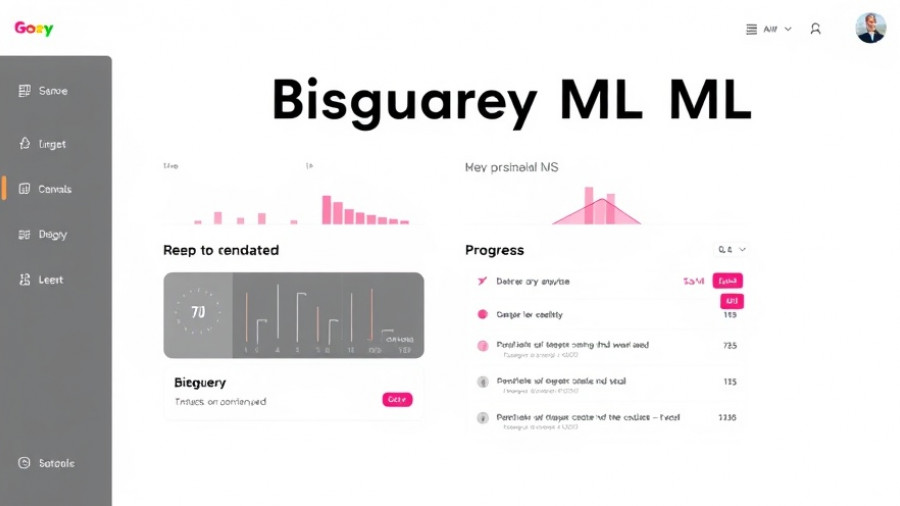
Understanding the Enhanced BigQuery ML UI for MLOps
The latest enhancements to the BigQuery ML UI provide small and medium-sized businesses with a powerful tool for streamlining their machine learning operations (MLOps). The improved user interface (UI) allows users to create, manage, and understand ML models all from within the BigQuery console. This transformation supports businesses aiming to integrate data science seamlessly into their operations. No longer confined to complex coding or technical jargon, users can now navigate the model creation process intuitively, making it a perfect fit for businesses eager to enhance their analytics capabilities without necessitating extensive tech expertise.
Revolutionizing Model Creation: Simplicity at Its Core
The updated BigQuery ML UI simplifies model creation with a guided, saveable SQL flow. Users can now save SQL queries directly within the model creation process. This removes the tedious duplication of effort and increases efficiency, allowing teams to focus on analysis rather than coding logistics. For example, predicting income brackets using U.S. Census demographic data can be achieved quickly and efficiently. By leveraging the census dataset, businesses can run targeted queries to prepare and analyze data that informs their model efficiently. This user-centric design is especially beneficial for small to medium-sized enterprises looking to leverage data-driven insights while managing limited resources.
Preparing for Predictive Analytics: Training, Evaluation, and Prediction Sets
A critical component of effective machine learning practice lies in properly preparing and segmenting data into training, evaluation, and prediction datasets. The enhanced UI simplifies the separation of data, allowing for clear differentiation among the three sets through simple SQL commands. For instance, organizations can allocate 80% of the data for training while reserving 20% for evaluation and prediction, ensuring robust model performance without overwhelming users with technicalities.
From Model Creation to Deployment and Prediction
Once the model is created within the BigQuery environment, businesses can leverage the power of the ML.PREDICT function to run predictions directly from the input data. This means that firms can obtain real-time insights based on the data they’ve prepared, leading to timely and informed decision-making. The model’s outputs, which include prediction probabilities and original inputs, are crucial for understanding the insights derived from the machine learning model.
The Value of Enhanced MLOps in Today’s Market
The MLOps enhancements in BigQuery align perfectly with the growing trends in data-driven decision-making within small and medium enterprises. With tools like Vertex AI offering integration capabilities, businesses are positioned to tackle the challenges of model management effectively. The combination makes it simple to build, automate, and monitor models, ensuring effective deployment and management throughout their lifecycle. With such tools at their disposal, small businesses can deploy machine learning capabilities that were once reserved for larger enterprises with dedicated data science teams.
Taking the Next Step: Implementing MLOps Strategies
As small and medium-sized businesses increasingly embrace data analytics through tools like BigQuery ML, they must also focus on developing strategic MLOps capabilities. This involves not only utilizing the enhanced UI but also understanding the broader context of machine learning implementation. By adopting best practices for data management and model evaluation, businesses can fully leverage their data for predictive analytics. Those interested in adopting these technologies should explore the available resources and guides that outline step-by-step instructions for creating and managing models effectively.
Ultimately, the enhancements to BigQuery ML provide an impactful opportunity for small and medium businesses to gain competitive advantages through effective data utilization. Companies that adopt such innovations stand to benefit vastly in the evolving tech landscape, where knowledge translates directly into power.
 Add Row
Add Row  Add
Add 



Write A Comment